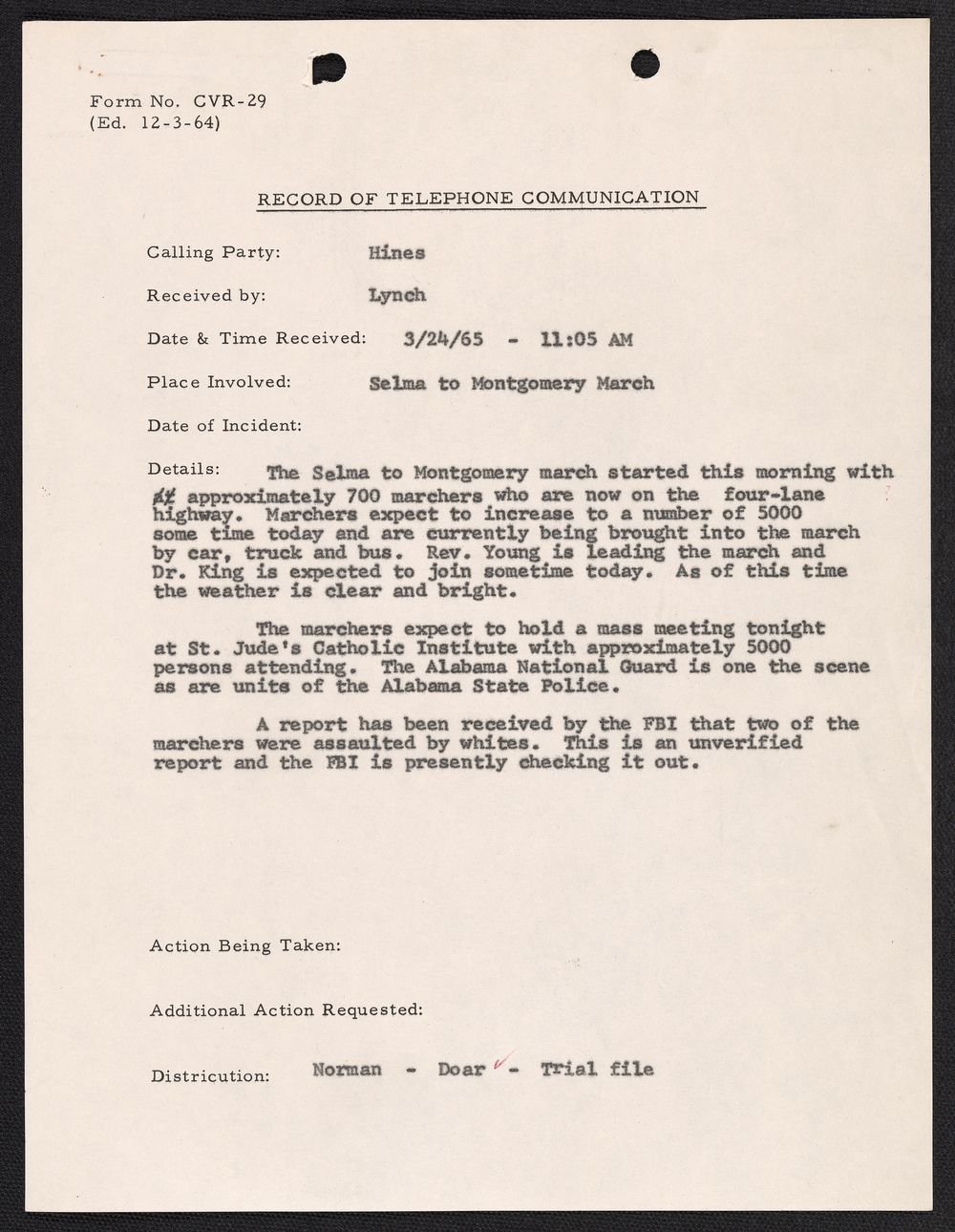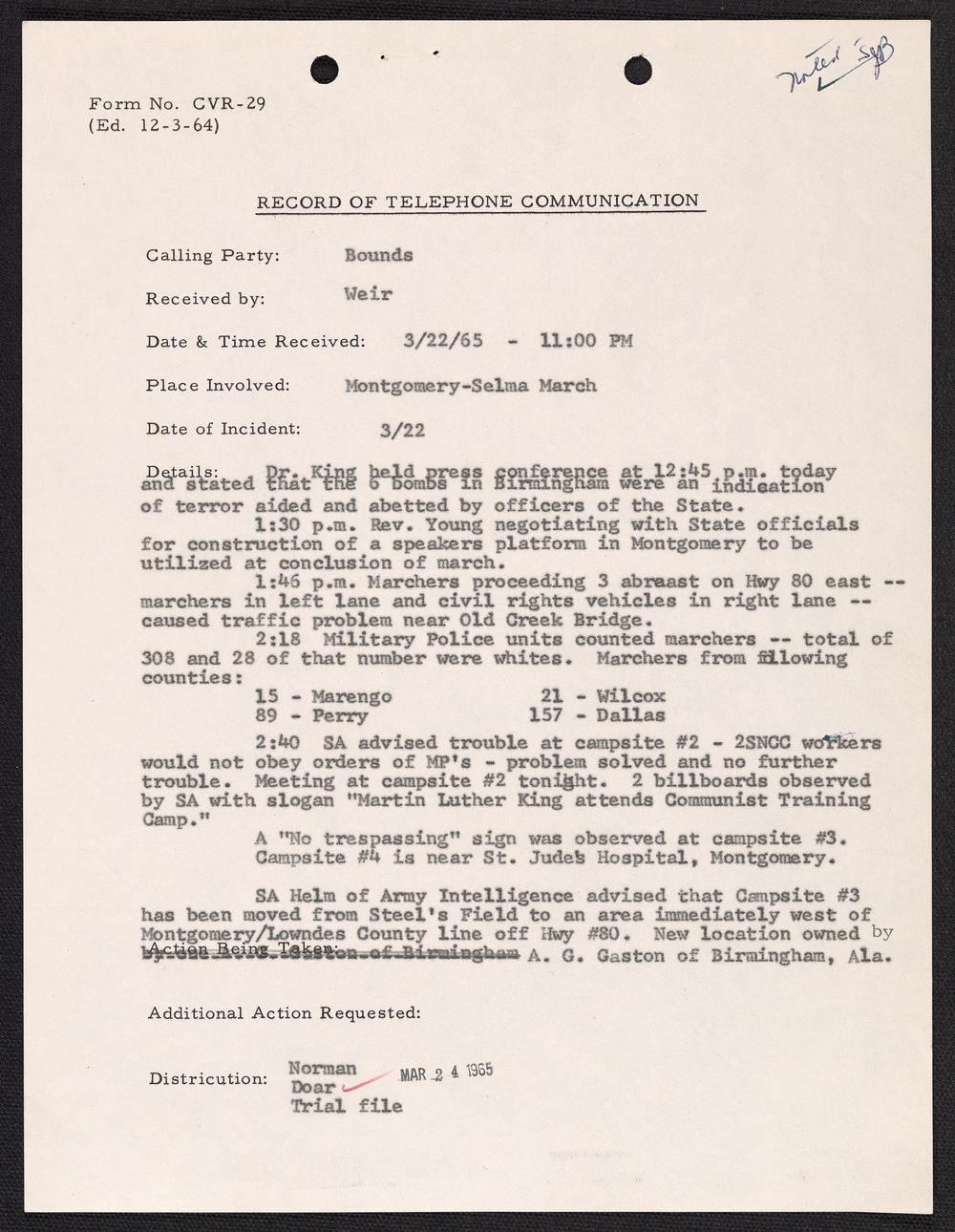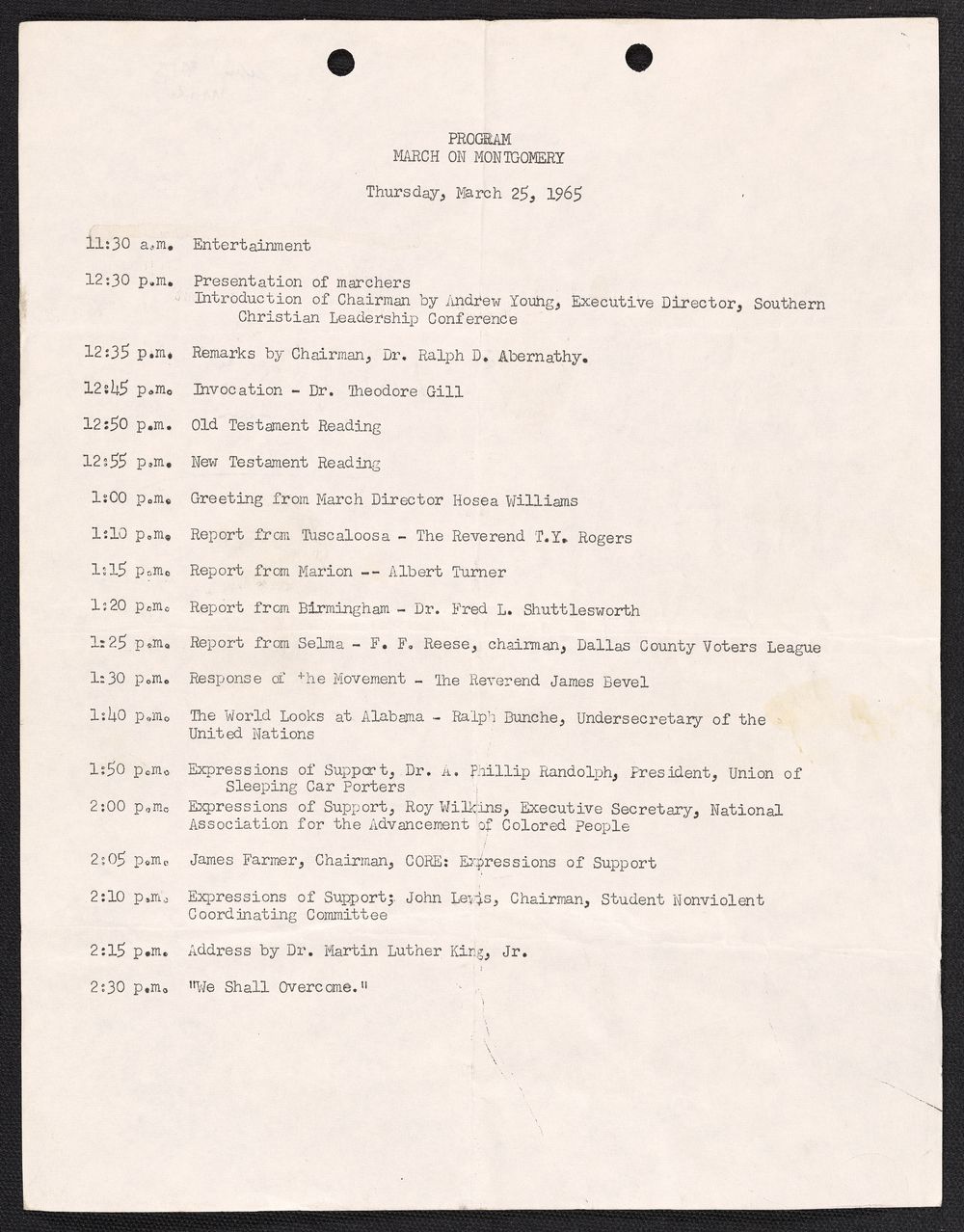Montgomery
On March 15, Student Nonviolent Coordinating Committee (SNCC) staff were organizing demonstrations in Montgomery. Even as President Lyndon Johnson’s famous speech to Congress that day, which echoed King’s rhetoric (…we shall overcome…”), was aired on the radio, SNCC activist James Forman attempted to lead marchers to the Alabama State Capitol building, where they planned to hand a petition to Governor George Wallace. The 600 marchers began from Jackson Baptist Church, but were quickly attacked by mounted police.

Protesters attacked by mounted police in Montgomery, 1965

Protesters attacked by mounted police in Montgomery, 1965
Following widespread uproar over the televised events of Bloody Sunday, the Voting Rights Act of 1965 was introduced in the U.S. Senate on March 17. Martin Luther King, Jr. ultimately led hundreds of marchers (swelling to thousands) from Selma to Montgomery, beginning on March 21.

Records of Telephone Conversations, March 22-24, 1965


Records of conversations within the Department of Justice regarding the progress of marchers from Selma, as well as preparations for the event in Montgomery. These documents show how carefully government officials were monitoring the march, and their efforts to avert and diffuse violence.
Wednesday’s Route - Mileage, Points, and Intersection, March 24, 1965

This annotated map details the route from the marchers’ penultimate campsite into Montgomery, concluding at the City of St. Jude, where a star-studded celebratory event would take place on March 24.
Program - March on Montgomery, March 25, 1965

The final campsite on the marchers’ journey was at the City of St. Jude, a Catholic complex on the outskirts of Montgomery. On the evening of March 24, the arriving marchers attended an event at St. Jude featuring, among others, James Baldwin, Nina Simone, Harry Belafonte, Sammy Davis, Jr., and Joan Baez, as well as speeches by a number of prominent figures in the civil rights movement, including Roy Wilkins, James Farmer, and James Bevel. Hosea Williams and Albert Turner, who were among the vanguard of the Bloody Sunday march, were also on the program.
On March 25, the march culminated in a gathering of some 25,000 attendees at the Alabama State Capitol building, where King delivered the iconic “How Long, Not Long” speech:
How long will justice be crucified and truth buried? I come to say to you this afternoon, however difficult the moment, however frustrating the hour, it will not be long. Because truth crushed to earth will rise again. How long? Not long! Because no lie can live forever. How long? Not long! Because you shall reap what you sow…
How long? Not long! Because the arc of the moral universe is long, but it bends toward justice.